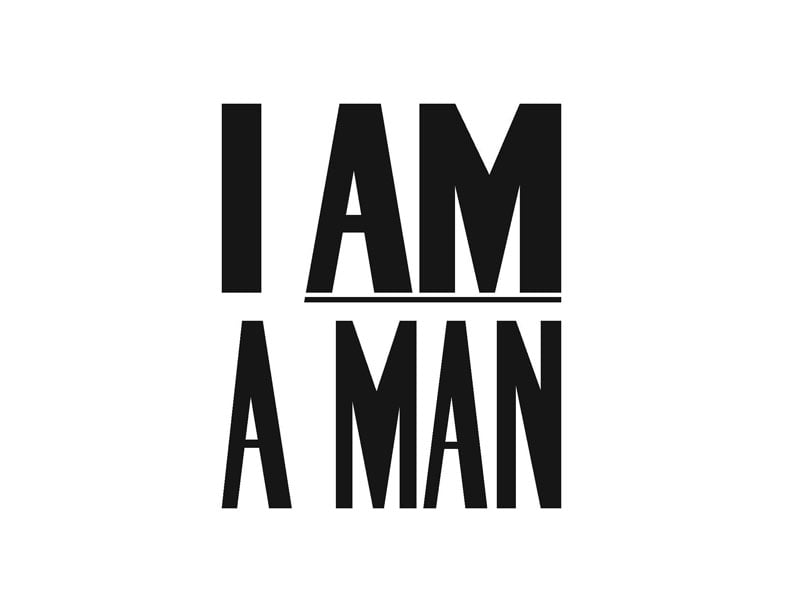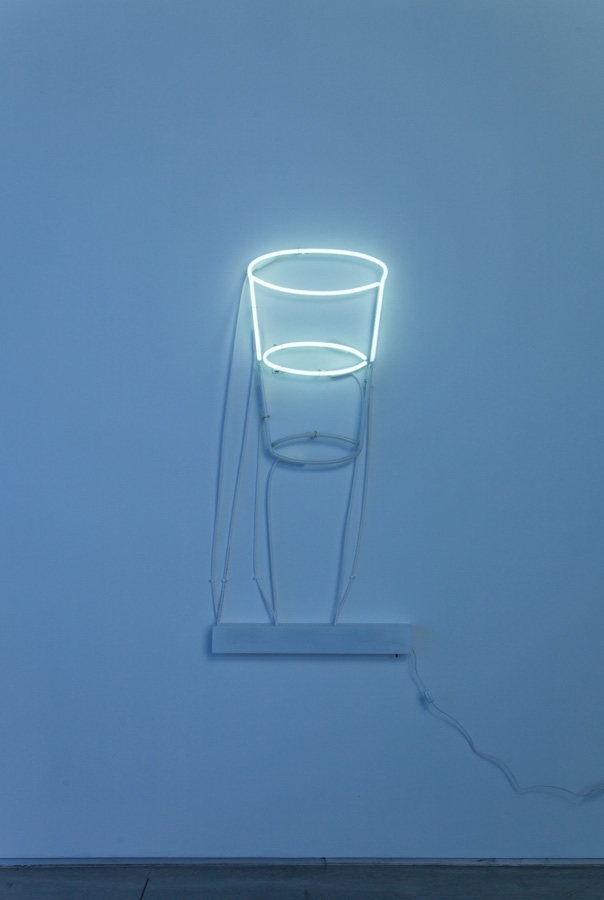I Am A Man
2013 - Painting (Painting)
Hank Willis Thomas
The image is borrowed from protests during Civil Rights where African Americans in the south would carry signs with the same message to assert their rights against segregation and racism. Historically, in countries such as the US and South Africa, the term “boy” was used as a pejorative and racist insult towards men of color, slaves in particular, signifying their alleged subservient status as being less than men. In response, Am I Not A Man And A Brother? became a catchphrase used by British and American abolitionists. The question “Am I Not A Man?” was brought up again during the Dred Scott decision of the U. S. Supreme Court in 1857. More recently, “I Am a Man” and also “I Am Not a Man” has been used as a title for books, plays and in film to assert the rights of all people to be treated with dignity, from African Americans to Feminists. Signs were even used in Arabic language translated to Ana Rajul during the Arab Spring. For this painting, the artist was specifically inspired by a particular photograph from the 1968 Memphis Sanitation Strike, where a large group of black men assembled with protest posters bearing the same message and nearly identical typeface. The artist has also created many other version of this painting that play with the orientation and wording of the text (ie: A Man I Am, I Be a Man, I Am Many, I Am The Man, etc.), reflecting historically on the variations that have been used before, and speculating on how they may continue in the future. Of this series the artist recalls:“I was born in 1976, and I was amazed that just eight years before I was born it was necessary for people to hold up signs affirming their humanity. The phrase that I grew up with was “I am the man,” which is also influenced by African-American culture but takes a very different starting point. What I was interested in was, how many other ways could I read that phrase?… In the U. S. Constitution, blacks were considered three-fifths of a man. Then there was the slogan adopted by the Quakers, “Am I not a man and a brother?” There are a lot of other references, like “Ain’t I a Woman?” is a reference to Sojourner Truth’s famous speech, but also the Women’s Liberation movement. The final painting in the group says “I am. Amen.” The greatest revelation should be that we are.”
Employing the visual language and terminology of mass media, and appropriating symbols and images from popular culture, Hank Willis Thomas’ work seeks to question and subvert established definitions and positions with regards to personal identity and the narrative of race. Working across installation, photography, video, and media work, Thomas maintains his photo conceptualist roots, primarily taking source material from found photographs and archives. These images form the basis from which the artist seeks to uncover the fallacies that history claims as truth. His work illustrates how the way history is represented and consumed reinforces generalizations surrounding identity, gender, race and ethnicity, and that as an artist he has an opportunity to expose or to revise those histories from the points of view of the oppressed.
Colors:
Related works featuring themes of: » Advertising and Brands, » Cultural Commentary, » Contemporary Conceptualism, » Cultural Identity, » Mass Media, » Appropriation Art, » Racial Identity, » Collective History, » Color Photography, » American

© » KADIST
Glenn Ligon
2000Glenn Ligon’s diptych, Condition Repor t is comprised of two side-by-side prints...

© » KADIST
Vincent Leong
2012The photograph Exquisite Eco Living is part of a larger series titled Executive Properties in which he digitally manipulated the images to insert iconic buildings of Kuala Lumpur in the view of derelict spaces also found in the city...

© » KADIST
Douglas Gordon
2004Douglas Gordon’s single-channel video The Left Hand Can’t See That The Right Hand is Blind, captures an unfolding scene between two hands in leather gloves—at first seemingly comfortable to be entwined, and later, engaged in a struggle...

© » KADIST
Walead Beshty
2018Office Work by Walead Beshty consists of a partially deconstructed desktop monitor screen, cleanly speared through its center onto a metal pole...

© » KADIST
Du Zhenjun
2010The Tower of Babel is an installation of large-format photographs that forces the audience to occupy a central position through its monumental scale...

© » KADIST
Wong Wai Yin
2021Drawn from the widely circulated images of protests around the world in support of women rights and racial equality, the phrase I can’t believe we are still protesting is both the title of Wong Wai Yin’s photographic series and a reference to similar messages seen on protest signages...

© » KADIST
Wong Wai Yin
2021Drawn from the widely circulated images of protests around the world in support of women rights and racial equality, the phrase I can’t believe we are still protesting is both the title of Wong Wai Yin’s photographic series and a reference to similar messages seen on protest signages...

© » KADIST
Wong Wai Yin
2008In this work the artist stages a humorously violent “intervention” against male-dominated cultures of art production in present-day China...

© » KADIST
Mungo Thomson
2008The White Album (2008) presents a compilation of one hundred issues of Artforum magazine released between 1970 and 1979...

© » KADIST
Adrian Wong
2012Untitled (Grate I/II: Shan Mei Playground/ Grand Fortune Mansion) is part of a series drawn from architectural objects that mark the boundary of public and private spaces Wong encountered while strolling in Hong Kong...

© » KADIST
Du Zhenjun
2010The Tower of Babel is an installation of large-format photographs that forces the audience to occupy a central position through its monumental scale...

© » KADIST
Wong Wai Yin
2021Drawn from the widely circulated images of protests around the world in support of women rights and racial equality, the phrase I can’t believe we are still protesting is both the title of Wong Wai Yin’s photographic series and a reference to similar messages seen on protest signages...

© » KADIST
Walead Beshty
2010Black Curl (CMY/Five Magnet: Irvine, California, March 25, 2010, Fujicolor Cyrstal Archive Super Type C, EM No 165-021, 05910) is a visually compelling photogram...

© » KADIST
Carlos Amorales
2005Produced on the occasion of an exhibition at ARTIUM of Alava, Basque Centre-Museum of Contemporary Art, this deck of cards is a selection of images from Carlos Amorales’s Liquid Archive...

© » KADIST
Walead Beshty
2012Constructed out of metal or glass to mirror the size of FedEx shipping boxes, and to fit securely inside, Walead Beshty’s FedEx works are then shipped, accruing cracks, chips, scrapes, and bruises along the way to their destination...

© » KADIST
Alexis Smith
1990Iron Sorrows (1990) brings together what are for Alexis Smith common motifs and materials such as scavenged and repurposed metal, and street signage...




